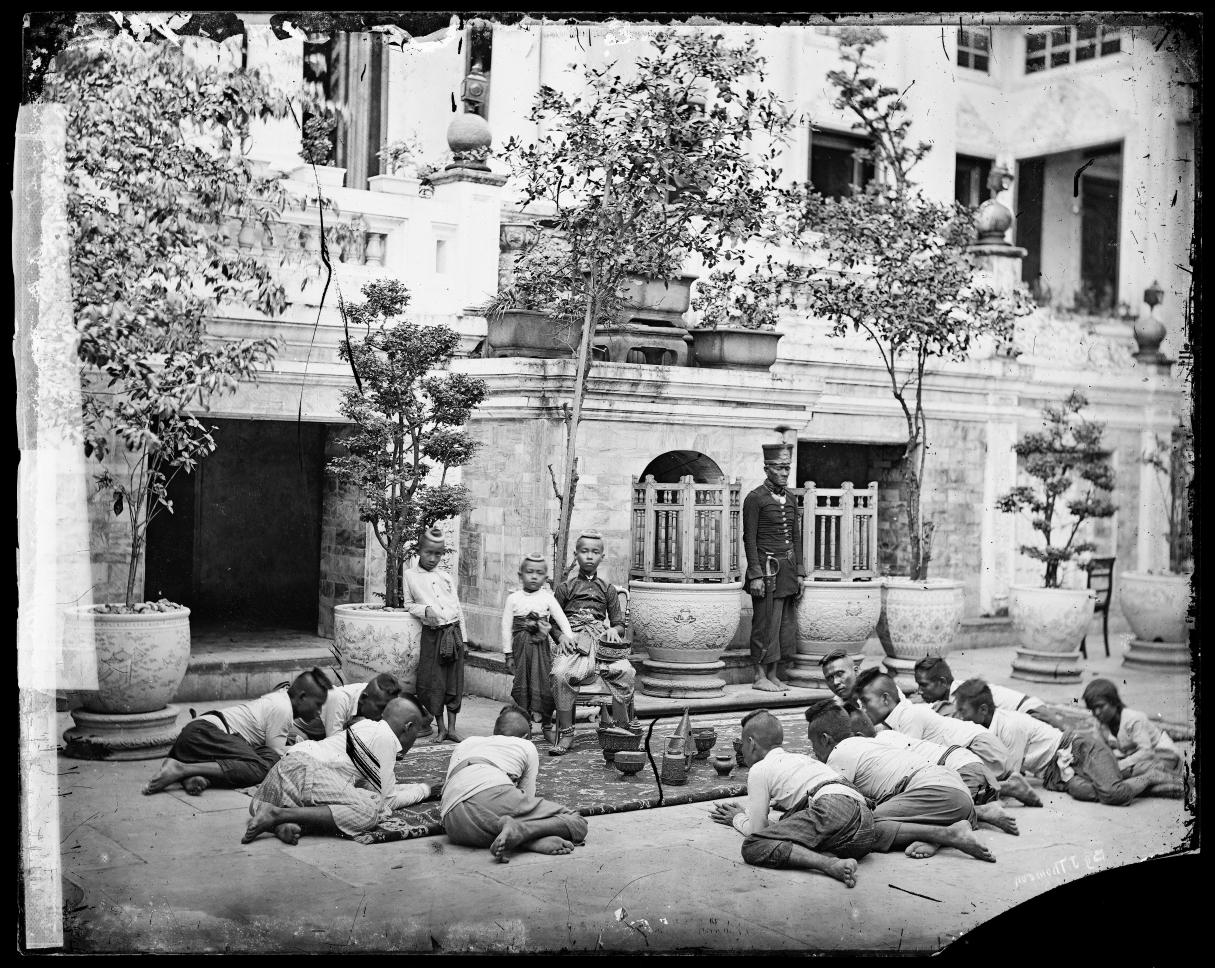
John Thomson, 1869.

Thompson brought back with after a decade in Asia.
The Scottish photographer and travel writer John Thomson (1837-1921) set off for Asia in April of 1862. He was headed for Singapore to join his brother who was working there as a watchmaker. The brothers started “Thompson Brothers”, a manufacturer of nautical and optical instruments with a photographic studio attached. It wasn’t long before John broke away to set up his own photography studio. He then began what would turn out to be a series of photographic wanderings around Asia the like of which had not been undertaken before. Unsponsored by any government agency or missionary service, Thompson went because he wanted to. Along with those photographs he took that he could sell or was commissioned for, Thompson always shot ordinary people, ordinary scenes and he faithfully documented the landscape. He was a prototype for photo-journalism. Out on his own, the son of an Edinburgh tobacco spinner, in another world.
It can’t have been easy either. Thompson was restricted at that time to using a wet-collodion process – each exposure had to be made directly onto a glass negative, in complete darkness whilst stooped inside what was in effect a makeshift darkroom tent built over a huge wooden camera on a heavy tripod. It would have been an extraordinarily labour intensive exercise, travelling over rough terrain with fragile glass negatives and bottles of highly flammable and poisonous chemicals in many crates of gear. It’s incredible that under these conditions, Thomson captured so many beautiful, sensitive and considered images.
With Singapore as his base he first travelled to Malaya and the Island of Sumatra. In 1864 he visited Ceylon (Sri Lanka) and India to shoot the aftermath of a cyclone. By 1865, Thomson had sold his Singapore studio and set up one in Siam (Thailand). In Bangkok he shot King Mongkut of Siam, senior members of the royal court and government and several important royal ceremonies.
In the next decade Thompson travelled, with all that gear, by boat and by horse drawn carriage, to Cambodia, Vietnam, Cambodia, Hong Kong, Macau and all over China. The hard won imagery he made make up a unique photographic portal (the only one we have) into this region (or any world region) from the 19th century. The sheer scope, technical and aesthetic quality Thomson’s work, achieved under such challenging conditions have to make Thompson one of the most significantly progressive and trailblazing of photographers of all time.
It was 1872 before Thompson finally walked down a ships gangplank and set foot back on British soil. With him were his many wooden crates containing over 600 precious exposures on glass plates.
These are those. From Thailand. Old Siam. The King & I – for real.
THE PAST THROUGH GLASS : John Thompson in Hong Kong & Macau 1868-71.
Credit: all images from The Wellcome Collecton who have held all 600 of Thompson’s glass negativessince 1922.

Original glass plate negative.


Original glass plate negative.


Original glass plate negative.




Original glass plate negative.

Original glass plate negative.


John Thomson, 1865.Original glass plate negative.


John Thomson, 1865.

and Prince Kasemsan Sophak (standing, right). John Thomson, 1866.


Original glass plate negative.


John Thomson, 1865.














